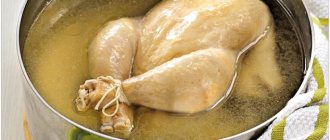Why does a baby refuse complementary feeding?
Problems with introducing complementary foods most often begin in mothers who feed their babies with breast milk. The baby is accustomed to suckling and does not need additional nutrients and nutrients until six months.
Even water and diluted compotes are given to him only in case of hot weather.
The exception to the rule is children who are not gaining weight and who are advised to eat extra porridge. Parents tend to panic when the baby does not eat complementary foods well or refuses them altogether. There may be several reasons for this behavior of a baby:
- lack of hunger (when trying to give food after breastfeeding);
- reflexive pushing out of food (due to inability to control the tongue);
- transition from sweet breast milk to bland pureed vegetables;
- mother's incorrect approach to feeding;
- inability to eat from a spoon (the child is only used to suckling and does not know what to do).
Most often, the child does not want to eat new dishes, as he is accustomed to sweetish and nutritious breast milk. As practice shows, children on nutritional formulas are introduced to basic food much faster and easier. The transition from bottle to spoon is made with fewer problems.
In addition to the physiological reasons that every family faces, it is also possible to refuse complementary feeding due to its early introduction.
If the baby is breastfed, then the first complementary foods should be introduced no earlier than 6 months . For bottle-fed babies, the permissible period is 4-5 months. However, before 4 months of age, you cannot give your baby any additional foods. Such a prohibition is associated with the imperfection of the gastrointestinal tract, which will not be ready to accept foreign food. Even the baby himself, until a certain age, shows practically no interest in other dishes. He cannot control his tongue, which increases the chances of pushing out food.
When to introduce porridge into complementary foods
Porridge is given as complementary food to infants at six months, when vegetable and fruit purees are already included in the diet. They start with buckwheat, then add rice and corn. At 8-9 months, oatmeal and barley porridge are added to the infants’ menu, and dairy dishes are included. It is not recommended to give semolina before a year.
The first porridge for a baby should be dairy-free buckwheat porridge without sugar and salt. For taste, add a few drops of breast milk or formula, as well as vegetable oil. For babies over eight months old, add a piece of butter. You should avoid salt and sugar for at least 10-12 months.
It is very important that the first porridges are gluten-free cereals cooked in water. They are the safest for babies, easier and faster to digest, and do not cause allergies or stomach upset. While gluten and cow's milk are highly allergenic. These components cause heaviness and indigestion.
Introduce each cereal gradually and leave breaks between introductions for at least a week. The first porridges should have the consistency of liquid puree, and always without lumps. Gradually, the proportion of cereals in the recipe is increased and the dish becomes thicker.
After eight months, you can add heat-treated fruits and vegetables, dried fruits to your baby’s porridge; after nine months, meat puree; after ten, fish puree. It is important to first introduce each component separately into your baby’s diet, and only then add it to the recipe. Read more about how to properly introduce complementary foods to babies here.
How to deal with the problem
If your child does not eat complementary foods, you should not immediately panic and run to the doctor for advice. First of all, you should assess the baby’s readiness to accept new food. This will be evidenced by: increasing interest in common table dishes, doubling of body weight from the neonatal period, more frequent demands for formula or breast milk, normal functioning of the gastrointestinal tract. In order for the first introduction of complementary foods to be more or less successful, you should adhere to the following rules:
- food is given on an empty stomach, before breastfeeding, in the first half of the day, but not in the morning;
- the diet should not be disrupted (that is, if the mother gave breast on demand, she should not suddenly offer the baby vegetable puree between feedings, but should wait until the baby wants to eat);
- the very first complementary foods should be introduced by mixing them with breast milk or an adapted formula;
- when choosing a vegetable, you need to take into account the child’s taste preferences (if he actively and for a long time refuses cauliflower, you should try switching to broccoli, and so on);
- when introducing a new product (a week or two after the first), you should reduce the amount of complementary foods already familiar to the baby;
- It is advisable to give the baby additional food during family meals, thus cultivating eating behavior and arousing the baby’s interest in eating dishes.

When the baby does not eat complementary foods, the mother should not be too persistent. If the baby refuses, then you should offer purees a little later. The tactic of temporarily stopping breastfeeding may be successful . That is, the mother offers the child a product, and when he refuses to eat it, he does not satisfy his hunger with breast milk, but waits for about half an hour, after which he again offers complementary foods. The hungrier the baby, the less taste whims he will show. However, you should not get carried away with this method.
When we introduce porridge into complementary foods
Porridge is one of the first products introduced into complementary foods.
- If the baby is gaining weight well, then he is introduced to her after they start giving vegetables, that is, at approximately 7 months;
- If there is a lack of weight, then the first thing the child is offered is porridge, that is, they are introduced into complementary foods from the age of six months.
Like any other product that is introduced into a baby’s diet, porridge is first given to him in a minimal amount and the reaction is observed. If everything went well, then gradually increase the volume of this dish in complementary foods.
If an allergy appears to porridge, then either they offer another type of this product, or, for a while, completely exclude it from the diet.
I talked in detail about how to introduce porridge into complementary feeding for a child in the article Porridge for the first complementary feeding>>>).
I would like to draw your attention to the fact that the technology, volumes and types of cereals that you will give to your child depend on your approach to introducing complementary foods.
- In the standard scheme, it is recommended to start with dairy-free cereals, which are not sweetened or added with salt for up to a year;
- In the first months of introducing cereals, it is most often recommended to offer the baby boxed cereals, then regular cereals (up to 1-1.5 years, they also need to be crushed using a blender).
I don't support this approach.
Know! If you grind porridge before the age of 1.5 years, you will get a child who chokes on the slightest hard piece that gets on his tongue and also vomits.
Obviously, no mother wants such “beauty,” therefore, before introducing cereals into your child’s complementary foods, you should generally understand how and what you will do.
For more information about the safe introduction of complementary feeding to a child, see the online course ABC of complementary feeding: safe introduction of complementary feeding to an infant>>>
Common mistakes parents make
The child’s mother should clearly understand that she should not worry or panic in the following situations:
- the baby does not want to eat a particular vegetable, but in general successfully joins the common kitchen;
- the baby completely refuses complementary feeding, but steadily gains weight thanks to breast milk;
- The baby does not have any pathological symptoms or disturbances in the gastrointestinal tract, although he feeds only on breast milk.
Of course, it is advisable to start introducing children under one year old to the common table in advance.
But if the baby does not want to do this, then it is not recommended to force him.
Another common mistake if a child does not eat porridge is sweetening the dish or adding salt to it. Both the first and second are strictly prohibited, as they only bring harm to the child. also not recommended to immediately change the type of complementary foods if the baby refuses it. This is especially true when switching from vegetables to cereals. It is recommended to offer the same product 10-12 times before switching to a new one. Various distractions can help feed the baby for a while. However, one should not assume that he does not understand anything. Turning on cartoons, dancing, singing and fairy tales will not work in a week, and the baby will no longer trust you.
Sequence of product introduction
There is no consensus among pediatricians and nutritionists regarding the order of foods in complementary foods. Although in general the diet of an infant is generally accepted and should consist of:
- vegetable purees;
- cottage cheese and fermented milk products;
- milk and cereal porridges;
- meat (fish) dishes and egg yolk.
But the scheme for introducing products may be different in the interpretation of different authors.
Pediatrician Evgeny Komarovsky, based on the least likelihood of negative reactions, recommends starting with fermented milk products. Optimally - with low-fat kefir or kefir from a children's dairy kitchen, at the second feeding. This choice is explained by the ability of lactic acid bacteria to improve digestion, reduce the likelihood of intestinal infections and minimize the load on the infant’s immature liver.
For the first test, two or three teaspoons are enough. In the absence of negative reactions, the portion should be increased exponentially over the course of a week. On the 4th day, you can mix cottage cheese into kefir; the main thing is to choose a fresh and high-quality product. You can add a little sugar if the child refuses to eat it in its pure form.
To gradually replace the second feeding, the pediatrician advises choosing milk and cereal porridges; it is better to start with buckwheat, oatmeal and rice. You can either cook them yourself or buy them ready-made in baby food departments. There is no difference in their usefulness; focus on what form of porridge your child likes best. It is better to prepare milk porridge yourself using baby formula rather than cow's milk.
At the age of 8 months, it’s time to try vegetables and fruits. You can start with vegetable broth, vegetable puree, and introduce fruit later. Then the diet should gradually include soups with low-fat meat broth, meat and fish products, and egg yolk.
You shouldn’t get hung up on complementary feeding; nevertheless, its goal is not to immediately replace food, but to introduce it to it.
In addition to the recommended rules, you need to listen to your own intuition and your child. And then accustoming the baby to the common table will take place calmly and with pleasure for everyone.
Your baby has reached six months of age, his first tooth has already appeared, and now the period of introducing complementary foods has arrived. The logical stage in the development of each toddler is the transition from a diet consisting exclusively of mother’s milk or formula to a variety of adult foods. These are dairy and non-dairy porridges, vegetable, meat, fish and fruit purees, fermented milk products, bread, cookies. Some mothers prefer special baby food - a safe, but expensive option for complementary feeding. Some begin to give the baby immediately pureed adult food, for example, borscht or cutlets, as our grandmothers did. There are many feeding options. The main thing is that the baby should gradually get acquainted with more adult food; no one keeps babies under one year old on milk alone.
The situation may turn out differently. It happens that the little ones start eating cereals and vegetables with great pleasure, but sometimes they don’t want to eat them. The unusual taste of food causes an internal protest in them; babies continue to demand only their mother’s breast or a bottle of formula. You can often hear from a young mother that she complains about her baby, saying that she doesn’t want anything but the breast, turns away from the porridge, spits out the puree. Every attempt to feed the baby like an adult becomes a real struggle - mother and child are stressed, a lot of food has been transferred. What to do when a child refuses complementary feeding?
When should you be concerned?
The first year of a baby’s life is very eventful in terms of general changes in the body. Parents should closely monitor their children, noting even the most subtle changes. When babies do not eat complementary foods, normally eating formula or breast milk, then there is no need to worry. However, refusal of new foods along with a general decrease in appetite may be the first sign of a serious illness.
Because children exhibit more general symptoms rather than local ones, loss or decreased interest in food is an important diagnostic sign of the disease.
Also, during the introduction of complementary foods, the mother should carefully monitor changes in stool, the appearance of a rash, the general activity of the baby, body temperature, bloating, belching and vomiting. A cause for concern is any sign of the body not accepting new food . In such situations, the child is taken to a pediatrician, where a thorough examination is carried out. During the diagnosis, the cause of the pathological reaction to complementary foods is determined: allergy, infection, disruption of the gastrointestinal tract, deficiency of any enzymes.
Found a mistake? Select it and press Ctrl + Enter










